Animal Extinction Facts
Often perceived today as a detached, artificial and random threat, trapped In deep geological time or areas of the Earth that we have little contact or relationship with, extinction Is in fact an ever-present force that looms over all life. It Is a reality of existence and an Inevitable by-product of natural selection; if species survive by adaptation, then those that don’t or can’t die off. Natural organisms, born from our planet’s natural environment, can also succumb to It -from environmental factors such as inter-species competition, volcanic activity and population saturation, through to atmospheric ones such as climate change, extinction is caused in a wide variety of ways. These causes form a lethal cocktail that, since life began on Earth, has claimed 99.9 per cent of all species to have ever existed.
Considering that humans are not only a biological species but merely one out of the countless millions to ever have lived upon this planet, it could be suggested that our relationship with extinction is not as separate as we might think. What makes our species impervious to extinction’s causes?
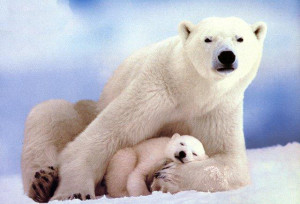 For instance, the Armageddon event at the Cretaceous-Tertiary boundary that wiped out the dinosaurs 65.5 million years ago would swiftly despatch us if It occurred today. The infectious pathogen that wiped out the native rats of Australia’s Christmas Island resonates fiercely in a world of mutant strains of H5N1. While the ever-dwindling environments that helped claim many species, like mammoths, up to 10,000 years ago really hits home In a world where in each subsequent year an extra 134 million people are born.
For instance, the Armageddon event at the Cretaceous-Tertiary boundary that wiped out the dinosaurs 65.5 million years ago would swiftly despatch us if It occurred today. The infectious pathogen that wiped out the native rats of Australia’s Christmas Island resonates fiercely in a world of mutant strains of H5N1. While the ever-dwindling environments that helped claim many species, like mammoths, up to 10,000 years ago really hits home In a world where in each subsequent year an extra 134 million people are born.
But despite the many ways that we are subject to it, humanity is also now an active contributor to worldwide extinction. Today, while natural extinction remains as potent as ever, it has been bolstered by a raft of human-generated activities.
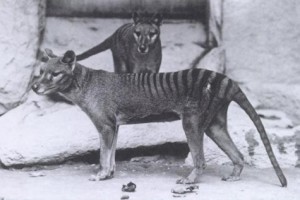 Everything from deforestation to agricultural clearance, logging, habitat fragmentation, urbanisation, hunting, poaching, industrialisation, human-generated climate change and the black-market pet trade all play their part in wiping out species around the world, little by little, day In day out, rapidly increasing extinction rates to unprecedented levels.
Everything from deforestation to agricultural clearance, logging, habitat fragmentation, urbanisation, hunting, poaching, industrialisation, human-generated climate change and the black-market pet trade all play their part in wiping out species around the world, little by little, day In day out, rapidly increasing extinction rates to unprecedented levels.
And here lies the crux of the matter. The difference between homo sapiens’ relation to extinction and that of any other species Is conscience – the ability to make informed and reasoned choices. Many natural causes of extinction are beyond the control of any species – there is such a thing as bad luck – however many that blight some of Earth’s most endangered animals can be prevented by humans. The key Is choosing to do so. Luckily, today more people, institutions and projects than ever before are helping to maintain Earth’s rich biodiversity by protecting the most-threatened fauna and flora. From non-governmental groups such as the World Wide Fund for Nature (WWF) and International Union for Conservation of Nature (IUCN), through to governmental and intergovernmental ones such as the United Nations Environment Programme (UNEP), the protection of the planet’s environment and its wildlife is being taken more and more seriously.
In the following feature, We explores extinction throughout Earth’s history up to the present day, analysing its causes and effects, as well as how we today can play a small but arguably significant role In combating it.
![Mass-extinction]() Mass-extinction
Mass-extinction
Mass-extinction is characterised by a sharp and widespread decrease in the diversity of life, occurring when the rate of extinction increases beyond that of the rate of speciation (the creation of new species). In the past 540 million years, there have been five mass-extinction events, each claiming more than 50 per cent of animal species. The most recent of these was the Cretaceous-Tertiary (K-T) extinction event that wiped out all non-avian dinosaurs 65.5 million years ago; for a detailed analysis of this event, see the ‘Mass-extinction’.
The K-T event resonates today for two reasons. Firstly due to the spectacular primary cause – a bolide (or super-large meteorite) Impact with Earth – and secondly due to Its extermination of the dinosaurs, an event that would eventually lead to the proliferation and evolution of mammals across the planet. Interestingly, though, our perception of this mass-extinction Is generally skewed today, with too great an emphasis placed on the bolide Impact Itself and less on the resultant and far more deadly series of knock-on effects, as well as a number of other contributing factors.
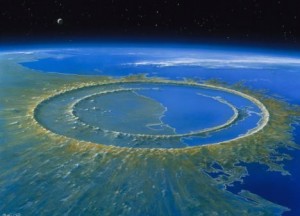 The Chicxulub crater, found today on the tip of the Yucatán Peninsula In Mexico, is widely considered by palaeontologists the area of impact for the K-T extinction bolide. The crater today measures 177 kilometres (110 miles) in diameter, a number that Indicates the Impacting meteorite was at least ten kilometres (six miles) in diameter when It struck Earth. While an impact of this magnitude obviously led to the immediate annihilation of many species, it would only do so In a relatively small area on a worldwide scale. The reasons that Its effects were felt all the way around the planet was its generation of vast quantities of dust and toxic gases in the atmosphere. The dust, spread by Earth’s winds, blocked out the Sun, resulting in the mass death of photosynthesising plants, while the toxic gases (eg carbon dioxide and sulphur oxide) generated vast quantities of acid rain. Combined, these two effects wiped out a huge proportion of the world’s flora and, as a direct consequence, Initiated a food chain collapse that extended all the way from tiny insects right up to large dinosaurs such as the tyrannosaurus rex. In addition, modern thinking suggests that during the time of the Impact, the Deccan Traps of modern-day India were erupting, also causing significant climate changes.
The Chicxulub crater, found today on the tip of the Yucatán Peninsula In Mexico, is widely considered by palaeontologists the area of impact for the K-T extinction bolide. The crater today measures 177 kilometres (110 miles) in diameter, a number that Indicates the Impacting meteorite was at least ten kilometres (six miles) in diameter when It struck Earth. While an impact of this magnitude obviously led to the immediate annihilation of many species, it would only do so In a relatively small area on a worldwide scale. The reasons that Its effects were felt all the way around the planet was its generation of vast quantities of dust and toxic gases in the atmosphere. The dust, spread by Earth’s winds, blocked out the Sun, resulting in the mass death of photosynthesising plants, while the toxic gases (eg carbon dioxide and sulphur oxide) generated vast quantities of acid rain. Combined, these two effects wiped out a huge proportion of the world’s flora and, as a direct consequence, Initiated a food chain collapse that extended all the way from tiny insects right up to large dinosaurs such as the tyrannosaurus rex. In addition, modern thinking suggests that during the time of the Impact, the Deccan Traps of modern-day India were erupting, also causing significant climate changes.
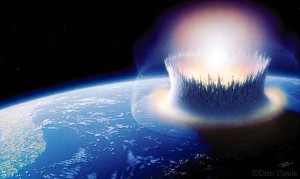 The K-T event, however, despite claiming 85 per cent of all species on Earth, Is not the largest to have occurred throughout our planet’s history. The Permlan-Triassic (P-T) mass-extinction, which occurred 252.3 million years ago – and has been nicknamed both the ‘Great Dying’ and ‘mother of all mass-extinctions’ – claimed 96 per cent of all marine species, 70 per cent of all terrestrial vertebrate species, 57 per cent of all families and 83 per cent of all genera.
The K-T event, however, despite claiming 85 per cent of all species on Earth, Is not the largest to have occurred throughout our planet’s history. The Permlan-Triassic (P-T) mass-extinction, which occurred 252.3 million years ago – and has been nicknamed both the ‘Great Dying’ and ‘mother of all mass-extinctions’ – claimed 96 per cent of all marine species, 70 per cent of all terrestrial vertebrate species, 57 per cent of all families and 83 per cent of all genera.
Geo-climate extinction
Moving forwards In time, another cause of species extinction can be seen In the geo-climate changes of Earth’s most recent ice age. This is but the last of what’s believed to be a series of five major ice ages which have occurred since our world formed. Ice ages are characterised as a period of long-term temperature reduction and growth of continental and polar ice sheets, as well as alpine glaciers. Within an ice age there are both glacial (the last one peaked approximately 20,000 years ago) and interglacial periods, with the last glacial period ending approximately 10,000 years ago.
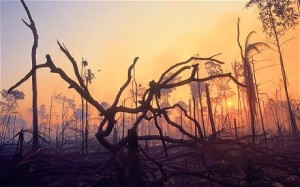 The run-up to and crossing of this boundary threw many notable species Into decline. Creatures such as the woolly mammoth, sabre-toothed cat (smilodon), giant ground sloth and Irish elk all suffered due to habitat loss and vegetation changes. This global warming further caused the Earth’s average sea level to rise and increase in temperature. This shift altered ocean currents and, as a direct consequence, affected the efficiency in which deeper areas were oxygenated and therefore the survival chances of a vast number of marine species.
The run-up to and crossing of this boundary threw many notable species Into decline. Creatures such as the woolly mammoth, sabre-toothed cat (smilodon), giant ground sloth and Irish elk all suffered due to habitat loss and vegetation changes. This global warming further caused the Earth’s average sea level to rise and increase in temperature. This shift altered ocean currents and, as a direct consequence, affected the efficiency in which deeper areas were oxygenated and therefore the survival chances of a vast number of marine species.
Of course, interglacial periods can both aid and hamper speciation, with new species emerging thanks to favourable alterations to the environment and the decline of other competitor or predatory species. Further, it is easily argued that these types of extinction are both natural and beyond the control of Earth’s inhabitants. However, on the flipside, when you factor in that the current general scientific consensus states that human-caused activities over the past 200 years – such as deforestation and industrial pollution – have sharply increased global warming through the generation of greenhouse gases, the geo-climate changes typified towards the end of the last Ice age are in fact being perpetually fuelled today, exacerbating the natural process.
Artificial extinction
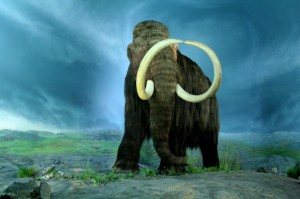 Since the rise of early man, a major cause of extinction has been simply their – and subsequently our – presence on Earth. Hunting, one of the earliest causes -by early humans and later homo sapiens – has caused many of the world’s most notable animals to become extinct, a process that Is continuing even today. To name but a few, the Syrian elephant, dodo, elephant bird, Steller’s sea cow, quagga, thylaclne, Caspian tiger and western black rhino have all been driven to the brink, and over It, by hunting.
Since the rise of early man, a major cause of extinction has been simply their – and subsequently our – presence on Earth. Hunting, one of the earliest causes -by early humans and later homo sapiens – has caused many of the world’s most notable animals to become extinct, a process that Is continuing even today. To name but a few, the Syrian elephant, dodo, elephant bird, Steller’s sea cow, quagga, thylaclne, Caspian tiger and western black rhino have all been driven to the brink, and over It, by hunting.
These types of exterminations were often justified on the grounds of their isolation and singularity, or perceived threat to human habitation. Importantly though, the nature of Earth’s ecosystems Is very tight knit, with many animals intrinsically linked (eg co-evolutionary species), with each surviving thanks to others’ existence. By removing one, you threaten to Instigate a knock-on effect In which many other species are forced to rapidly adapt or perish.
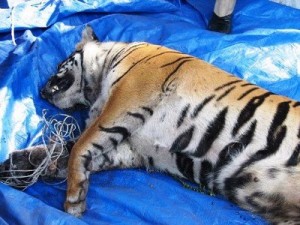 Regardless of whether human-caused extinction can ever be justified – our eradication of the small pox virus, for instance, has saved members of many species Including our own – today’s continued decline of worldwide species re-raises the heart of the matter regarding extinction and how to combat it.
Regardless of whether human-caused extinction can ever be justified – our eradication of the small pox virus, for instance, has saved members of many species Including our own – today’s continued decline of worldwide species re-raises the heart of the matter regarding extinction and how to combat it.
While many may argue that humans hold dominion over all other species, it doesn’t make it true, ethically right or something that should be exploited. Not only does each extinction lead to a reduction In a habitat’s biodiversity and sustainability, but it impacts the human race and all future generations.
How do mass extinctions affect planet habitability
1. Armageddon – Judging by the remaining Chicxulub crater in the Yucatán Peninsula – dated to the K-T extinction event – the impacting object had an estimated diameter of 10km (6mi). This would have meant the resultant collision would have generated an explosion equivalent to the sudden detonation of about 96 teratons of TNT. To put this in perspective, the most powerful manmade explosive device ever detonated had a yield of 50 megatons of TNT (and there are 1 million megatons in a teraton). Compounding this impact was increased volcanic activity in the Deccan Traps of modern-day India.
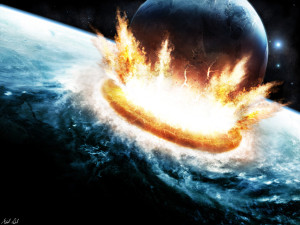 2. Paradise lost – The impacting explosion was then followed by a lethal cocktail of megatsunamis – estimated to have reached thousands of metres high, super-heated dust clouds and widespread volcanic activity. Further, ejected material alongside pieces of the impactor blown out of the atmosphere would have re-entered as superhot rock, scorching the Earth’s surface and causing mass wildfires. The generated dust clouds would have covered the entire surface of the Earth, remaining in the atmosphere for up to a decade and severely blocking out the Sun.
2. Paradise lost – The impacting explosion was then followed by a lethal cocktail of megatsunamis – estimated to have reached thousands of metres high, super-heated dust clouds and widespread volcanic activity. Further, ejected material alongside pieces of the impactor blown out of the atmosphere would have re-entered as superhot rock, scorching the Earth’s surface and causing mass wildfires. The generated dust clouds would have covered the entire surface of the Earth, remaining in the atmosphere for up to a decade and severely blocking out the Sun.
3. Carbon – The impact would have also generated a shock production of carbon dioxide and sulphur from the widespread destruction of carbonate rocks and direct collision with areas of ocean. This would have Initiated a sudden greenhouse effect, heating the immediate environment and atmosphere. Oxygen levels were also greatly affected.
4. Acid attack – The sudden and large-scale release of huge quantities of carbon and sulphur dioxide would have then led to planet-wide acid rain. The rain would be increased due to the injection of water vapour – from the ocean collision – into the atmosphere.
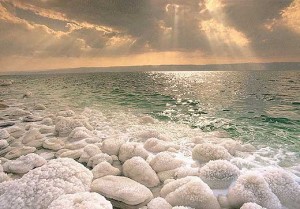 5. Dead sea – Oceans worldwide -specifically those in close proximity to the impact -suffered massively, with thousands upon thousands of species, ranging from micro-biota through marine invertebrates and up to large species such as pliosaurs, dying off rapidly. For example, it has been calculated that 35 per cent of all Earth’s echinoderms (eg starfish and sea urchins) became extinct at the K-T boundary. A key cause of this was the reduction of deep-sea currents, which are needed to oxygenate the ocean depths.
5. Dead sea – Oceans worldwide -specifically those in close proximity to the impact -suffered massively, with thousands upon thousands of species, ranging from micro-biota through marine invertebrates and up to large species such as pliosaurs, dying off rapidly. For example, it has been calculated that 35 per cent of all Earth’s echinoderms (eg starfish and sea urchins) became extinct at the K-T boundary. A key cause of this was the reduction of deep-sea currents, which are needed to oxygenate the ocean depths.
6. Chain collapse – On land, the combination of the impact as well as the resulting catastrophic environmental and atmospheric changes initiated a food chain collapse. At the base, Earth’s flora (particularly that which relied on photosynthesis) began to die off in large quantities due to the lack of sunlight and extreme weather. This led to a major reshuffle in dominant plant groups.
7. Cold blood – With huge swathes of Earth’s plants disappearing, insects and insect-eating reptiles/amphibians also began to die off due to scarcity of food sources. Importantly, organisms that fed off detritus generally survived, leading to an explosion of fungi and carrion-eating insects. The avian dinosaurs that had not been killed off due to atmospheric changes also now began to decline for the same reasons, as most were pure carnivores. Small species of early birds survived thanks to the many worms and snails around.
8. Beginning of the end – The collapse of many of Earth’s plant, Insect and reptilian species then Initiated the total extinction of ground-based dinosaurs. Small dinosaurs such as pachycephalosaurus were wiped out quickly from malnutrition due to a lack of viable food sources.
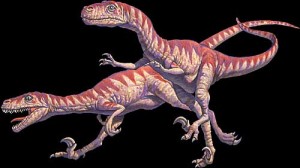 9. Domino effect – As smaller dinosaurs began to die out, so did their larger brethren. It was not just medium-sized carnivores who suffered though – herbivores such as hadrosaurids also went Into steep decline, as vegetation became scarce. Studies of Late Cretaceous hadrosaurs show that they started to eat decomposed wood material to try and gain some nutrients.
9. Domino effect – As smaller dinosaurs began to die out, so did their larger brethren. It was not just medium-sized carnivores who suffered though – herbivores such as hadrosaurids also went Into steep decline, as vegetation became scarce. Studies of Late Cretaceous hadrosaurs show that they started to eat decomposed wood material to try and gain some nutrients.
10. King killer – With almost their entire food source being systematically eradicated, the largest – and usually most carnivorous – of the dinosaurs began to die out. Despite the tyrannosaurus rex’s supreme physical power and dominance over other species, the combination of a lack of food, desolated environment and toxic atmosphere, rendered it powerless to avoid its fate.
11. Disaster taxa – Following this great cleansing of many of Earth’s species, an intermediate period of growth and rebuilding began – one in which disaster taxa flourished. Disaster taxa are organisms that through their simple and rapid reproduction mechanism, as well as loose and flexible diet, manage to survive and multiply in large numbers.
12. Renaissance – After millions of years of regeneration, stable ecosystems began to emerge once more, driven by processes such as natural selection. These systems provided a base on which surviving clades (groups of organisms evolved from the same species) from the Cretaceous could flourish. New species developed too and many modern-day birds, reptiles, mammals and amphibians are descendents of this period.
Did mammals survive extinction
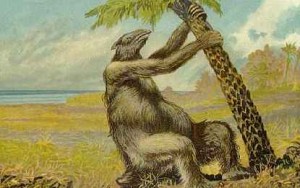 During the run-up to the end of the last ice age, many species tried to adapt to the ever-changing climate, migrating thousands of miles in an attempt to escape extinction!
During the run-up to the end of the last ice age, many species tried to adapt to the ever-changing climate, migrating thousands of miles in an attempt to escape extinction!
Megatherium
This elephant-sized ground sloth was endemic to South America and evolved there in isolation while it was still an island in the Paleogene epoch. As with the smilodon though, it migrated northwards into Central and North America in the Great American Interchange. Towards the close of the Pleistocene epoch, however, it is suggested that the rate of migration increased in partnership with the expansion of human hunters, who targeted the animal for its meat and fur. Its huge size – when standing on its hind legs it was six metres (20 feet) tall, omnivorous diet and large claws did help it to survive longer than other species of megafauna though.
![Smilodon]() Smilodon
Smilodon
Evidence suggests that each species of sabre-toothed tiger migrated over large distances in the period leading up to the end of the last ice age. Smilodon fatalis, which initially lived in North America, invaded western South America as part of the Great American Interchange – a mass-migration of many species across the Americas. However, as the glacial ice sheets retreated, many North American members of fatalis, as well as smilodon gracilis, would have migrated north to avoid the hotter, drier summers.
Mammoth
Almost all species of mammoth naturally migrated, ranging from their origin species in Africa, through the European species and on to North American and Siberian species. During the close of the last ice age, the largest migrations were undertaken by the woolly mammoth, with retreating ice sheets forcing the animals out of North America and deeper into Siberia. A 2008 study estimated climate changes shrank its suitable habitat from 7.7 million square kilometres (3 million square miles) to just 800,000 square kilometres (310,000 square miles).
![Woolly rhinoceros]() Woolly rhinoceros
Woolly rhinoceros
Originating about 2.5 million years ago in the northern foothills of the Himalayas and lasting until 10,0008,000 years ago, the woolly rhinoceros was driven to extinction by a mixture of the receding ice age and early human predation. Interestingly, recent studies of the species have concluded that for the majority of their evolutionary existence they were confined to steppe environments in continental Asia, yet as conditions became more arid towards the close of the last Ice age, they migrated north-eastwards into Europe and Russia.
Why do Mammoths extinct
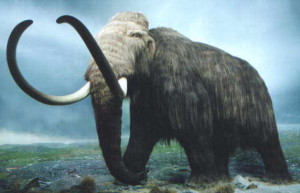 Hunting – The spread of human hunters throughout much of northern Eurasia and the Americas, in all likelihood, contributed significantly to the mammoth’s decline. A recent dig site in the Ukraine also suggests Neanderthals used mammoth bones for the construction of their homes.
Hunting – The spread of human hunters throughout much of northern Eurasia and the Americas, in all likelihood, contributed significantly to the mammoth’s decline. A recent dig site in the Ukraine also suggests Neanderthals used mammoth bones for the construction of their homes.
Warming – The Earth went through a warming trend at the start of the Holocene period 12,000 years ago. This caused a vast glacial retreat and rising sea levels that would have severely shrunk the mammoth’s typical habitat. Changing vegetation could also have contributed to their decline.
Disease – A more modern explanation, which is backed up by all of the various subspecies becoming extinct in a relatively short time, is by infectious disease. It is speculated the illness could have mutated naturally, or been passed on by prehistoric humans.
Why do Dodo birds extinct
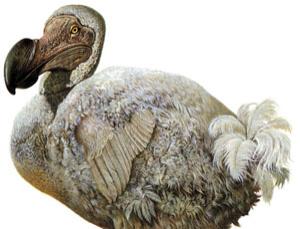 Homeless – One of the main causes of the dodo’s swift extinction was the effect of human-caused habitat loss. The rapid clearing of forests for firewood and building construction drove the dodo into smaller and smaller territories, generating habitat and population fragmentation, which exacerbated the other causes of extinction.
Homeless – One of the main causes of the dodo’s swift extinction was the effect of human-caused habitat loss. The rapid clearing of forests for firewood and building construction drove the dodo into smaller and smaller territories, generating habitat and population fragmentation, which exacerbated the other causes of extinction.
Fearless – Living in complete isolation from any predator for thousands of years, the dodo naturally developed a complete lack of fear towards other animals. Unfortunately, when humans and their pets/livestock settled on Mauritius, their docile nature led them to be easily shot or preyed upon.
Flightless – Due to the abundance of food on Mauritius, the dodo didn’t need to travel great distances to feed. As such, with each subsequent generation the species grew in stature and slowly lost its ability to fly. As soon as predators were unleashed on to the island, this became a fatal flaw.
Extinct animals in last 100 years
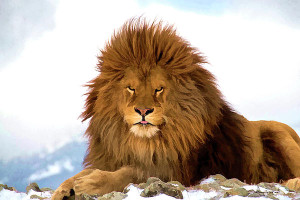 Barbary lion – With the last wild barbary lion shot in 1922, today the species is generally considered extinct. A few unverified claims have stated select individuals still exist in private collections.
Barbary lion – With the last wild barbary lion shot in 1922, today the species is generally considered extinct. A few unverified claims have stated select individuals still exist in private collections.
Seychelles giant tortoise – A populous resident of the Seychelles until the mid-19th century, this giant tortoise today is limited to a small batch held in captivity. One of the creatures, named Jonathan, is over 180 years old.
Scimitar oryx – In the early 19th century the scimitar oryx inhabited the whole of North Africa. However, due to extreme human predation for their horns, the species is now considered extinct in the wild, with no confirmed sighting for 15 years.
Giant panda – The giant panda is currently rated as ‘Endangered’ on IUCN’s Red List. Today, the species is dwindling rapidly due to human-caused habitat loss and low birth rates. While the species is not extinct in the wild, many argue it won’t be long.
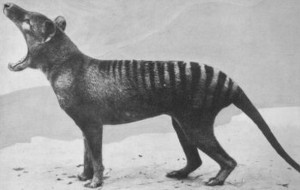 Quagga – A subspecies of zebra, the quagga was at one time common in South Africa. It was differentiated from a zebra by its unique head-only stripes, with the centre and rear fading in colour Into solid brown.
Quagga – A subspecies of zebra, the quagga was at one time common in South Africa. It was differentiated from a zebra by its unique head-only stripes, with the centre and rear fading in colour Into solid brown.
Tasmanian tiger (thylacine) – The largest-known carnivorous marsupial of the last 200 years, the thylacine (or Tasmanian tiger) lived in Tasmania until a mixture of human disease, hunting and habitat loss led them to be wiped out.
Caspian tiger – Throughout the 19th century a resident of forests around the Caspian Sea, by 1970 the Caspian tiger had been hunted and displaced to extinction. The last known confirmed sighting was in 1958.
Pyrenean ibex – The last ever naturally born Pyrenean Ibex was found dead on 6 January 2000. However, In 2009 scientists cloned a female ibex that, while born alive from a host mother, died after several minutes.
Bringing back extinct species
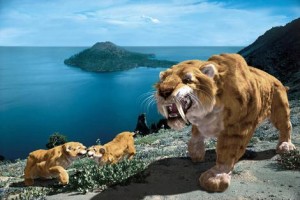 The cloning of extinct animals is a growing field, opening the possibility of reanimating species that have been dead for hundreds, thousands or even millions of years!
The cloning of extinct animals is a growing field, opening the possibility of reanimating species that have been dead for hundreds, thousands or even millions of years!
In October 2000, a team of scientists from the Advanced Cell Technology company announced they were going to attempt to bring back to life the extinct species of Pyrenean ibex (capra pyrenaica pyrenaica). The team was to use nuclear transfer cloning technology – a process in which the DNA from an unfertilised egg is removed and then Injected with the nucleus of the desired animal to be cloned (gathered from the last animal to die – a female ibex named Celia) into a host mother for rebirth. The objective of the experiment was to produce multiple ibexes and then return them back to their natural habitat in the Pyrenees.
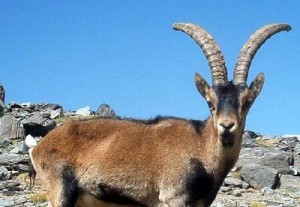 Unfortunately, despite a Pyrenean ibex being born alive from its surrogate mother, within a short period of time It died as a result of lung defects. Further, the project highlighted a fatal flaw in current cloning technology, In that even if a new female animal could be brought back to life, there would be no male Pyrenean Ibexes for the clone to breed with. Beyond this, on a more general level, if species were to be brought back to life that lived millions of years ago – as famously speculated by the film Jurassic Park – the environmental (changes to atmosphere composition, for example) conditions of the Earth today would prove a major stumbling block for their adaptation and survival.
Unfortunately, despite a Pyrenean ibex being born alive from its surrogate mother, within a short period of time It died as a result of lung defects. Further, the project highlighted a fatal flaw in current cloning technology, In that even if a new female animal could be brought back to life, there would be no male Pyrenean Ibexes for the clone to breed with. Beyond this, on a more general level, if species were to be brought back to life that lived millions of years ago – as famously speculated by the film Jurassic Park – the environmental (changes to atmosphere composition, for example) conditions of the Earth today would prove a major stumbling block for their adaptation and survival.
Despite this setback, a new international team of scientists from Japan, Russia and America are beginning this year on a project to clone a mammoth from tissue samples retrieved from a carcass excavated from Siberian permafrost. The plan Involves the same nuclear transfer cloning process that was used for the Pyrenean ibex, with the resultant embryo deposited into the womb of a modern elephant for the gestation period. Whether or not the project will succeed is still up for debate, however a recent project to clone a rat from frozen cells was successful.
Critically endangered species
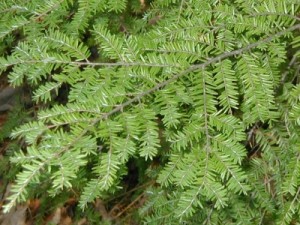 Florida Yew – Located in a 10sq-km (3.9sq-mi) area of northern Florida at altitudes between 15 and 30m (49 and 98ft), the Florida yew is an evergreen coniferous species that grows to around 6m (20ft) high. It is dioecious, with male and female cones developing on separate plants; it is also poisonous to humans. Logging in the 20th century led to range reduction and habitat fragmentation, initiating a rapid decline of this tree.
Florida Yew – Located in a 10sq-km (3.9sq-mi) area of northern Florida at altitudes between 15 and 30m (49 and 98ft), the Florida yew is an evergreen coniferous species that grows to around 6m (20ft) high. It is dioecious, with male and female cones developing on separate plants; it is also poisonous to humans. Logging in the 20th century led to range reduction and habitat fragmentation, initiating a rapid decline of this tree.
Atelopus patazensis – A small toad endemic to Peru, atelopus patazensis lives in highland environments. Over the past ten years the species has been in steep decline, with mining activities thought to be the prime cause. Studies have shown large quantities of mercury in the region’s streams.
Bog turtle – Weighing no more than 110g (3.8oz), the bog turtle is a semi-aquatic species first recorded in 1801. It has a slow reproduction rate and is omnivorous. Manmade changes to the turtles’ habitat and their popularity on the black market has led to an 80 per cent drop in colonies over the past 30 years.
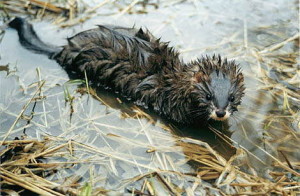 European mink – Originally prolific through Europe, this mink now exists only in isolated pockets, with its total range reduced by over 85 per cent since 1850. The European mink is currently threatened by a lethal combination of habitat loss, hunting and competition from the alien American mink.
European mink – Originally prolific through Europe, this mink now exists only in isolated pockets, with its total range reduced by over 85 per cent since 1850. The European mink is currently threatened by a lethal combination of habitat loss, hunting and competition from the alien American mink.
Blue-throated macaw – A brightly coloured species endemic to north-central Bolivia, the blue-throated macaw is currently one of the most endangered species on the planet, with only 250 individuals left in the wild. Its decline has been caused by several factors, all of them driven by humans.
Red-crested tree rat – With only one confirmed contact in 114 years, very little is known about the red-crested tree rat’s habits, leading to a knock-on effect of a lack of knowledge regarding its potential threats. An increase in holiday homes and coffee cultivation in the region are suspected to be two major ones.
Black rhinoceros – Adult black rhinos grow up to 1.8m (5.9ft) high at the shoulder and 3.8m (12.5ft) in length. Its twin horns are made of keratin and can grow to over 1m (3.3ft) in length. The species is primarily under threat from poachers. Since 1950 their numbers have decreased by a staggering 97.6 per cent.
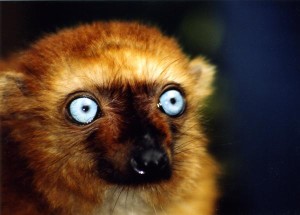 Blue-eyed black lemur – A species of true lemur, the blue-eyed black lemur is commonly found in groups of between seven to ten individuals, and its diet varies from fungi to fruits. Over the past 100 years human logging and construction have cleared almost the species’ entire native habitat, and this is the lemur’s greatest threat.
Blue-eyed black lemur – A species of true lemur, the blue-eyed black lemur is commonly found in groups of between seven to ten individuals, and its diet varies from fungi to fruits. Over the past 100 years human logging and construction have cleared almost the species’ entire native habitat, and this is the lemur’s greatest threat.
Siau Island tarsier – The Siau Island tarsier is one of Indonesia’s rarest creatures. Linked to other Eastern tarsiers, the species is only found on Siau Island, which is dominated by a large active volcano. Asides from the obvious volcanic threat, the population is currently most threatened by human dwelling expansion as well as being hunted for food.
Chinese water fir – A species that is intolerant of competition, the Chinese water fir traditionally was widespread throughout China and Vietnam. Today, however, only 250 or so remain in the wild, with persistent generation-on-generation decline driven by insensitive agricultural clearing and illegal logging.
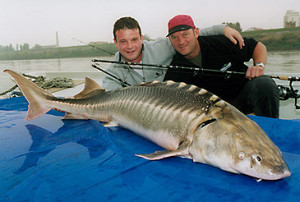 Adriatic sturgeon – This large type of sturgeon is rarely seen in the wild and, in light of an estimated population decline of over 80 per cent in 60 years, is listed as ‘possibly extinct’ on the Red List. From most recent figures, it is thought there are no more than 250 Adriatic sturgeon left, with most in the area of the Po River.
Adriatic sturgeon – This large type of sturgeon is rarely seen in the wild and, in light of an estimated population decline of over 80 per cent in 60 years, is listed as ‘possibly extinct’ on the Red List. From most recent figures, it is thought there are no more than 250 Adriatic sturgeon left, with most in the area of the Po River.
Blue-crowned laughingthrush – With an estimated 240 left in the wild, the blue-crowned laughingthrush is an incredibly rare resident of China’s Jiangxi province that nests commonly in camphor and maple trees. The small bird’s severe decline is largely due to trapping for the black market.
Man made extinction
Illegal logging
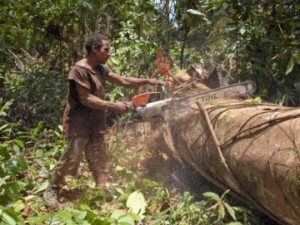 From Europe to Asia, illegal logging is decimating protected and unprotected environments alike, sacrificing Earth’s most diverse ecosystems.
From Europe to Asia, illegal logging is decimating protected and unprotected environments alike, sacrificing Earth’s most diverse ecosystems.
Illegal logging is estimated to cost nations worldwide In excess of USD 10 billion annually. That, however, is the least damaging consequence. More importantly, the mass destruction of Earth’s forests and jungles leads directly to large-scale habitat loss for a plethora of species.
What is arguably most shocking about this form of human-made extinction is that, as of 2012, It’s estimated that more than 50 per cent of all illegal logging Is done in the world’s most environmentally vulnerable regions. From the exotic Amazon Basin through to the diverse islands of Southeast Asia, the percentage of illegally harvested logs far outweighs those legally sourced.
Of all areas of concern, tropical rainforests are receiving the most attention, both from illegal loggers and from conservationists. Why Is this? Of approximately 16 million square kilometres (10 million square miles) of tropical rainforest habitat that once existed on Earth, today less than 9 million square kilometres (3.5 million square miles) remain. Indeed, the current rate of tropical deforestation lies at 160,000 square kilometres (62,000 square miles) a year, or one per cent per annum. This is highly worrying as tropical rainforests are home to over 50 per cent of all of the planet’s species. In fact, there is often more than 43,000 species of plant, animal and insect found in a single hectare.
Poaching
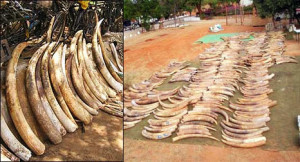 Fuelled by human greed, both for exotic foods and for money, many of Earth’s most endangered species are being trapped and killed every day.
Fuelled by human greed, both for exotic foods and for money, many of Earth’s most endangered species are being trapped and killed every day.
The Victorian notion of humans being the God-given rightful rulers of Earth and its animals, despite being largely quashed today, has sadly permeated into the 21st century, leading to small but fanatical areas of horrific hunting. Driven by a desire of wealth and pleasure, critically endangered species of all types are being marked for death or capture by poachers who, asides from conservationist institutions, face little opposition.
While the images on this page are unsettling, what is most disturbing Is the numbers that run underneath them. Madagascar’s lemurs – which are considered a delicacy in many of the nation’s restaurants despite being both protected and endangered – are bought dead by middlemen for roughly 35 pence (53 US cents) per animal. These are then sold on to the restaurants for about GBP 2.70 (USD 4.20). Mountain gorillas – again a critically endangered species with less than 700 left in the wild – can fetch anywhere between GBP 2,500 (USD 4,000) dead to upwards of GBP 25,500 (USD 40,000) alive. Even parts of animals are highly desired, with bear paws costing GBP 32 (USD 50) for four, shark fins GBP 250 (USD 400) per pound and rhino horns selling for up to GBP 62,000 (USD 97,000) per kilo.
As of 2012, poaching is driving well-known species such as the black rhino, Siberian tiger, mountain gorilla and Siau Island tarsler to the brink. And it’s a vicious circle, with every death inflating their black-market price even further and, as a direct consequence, making them even more desirable to poachers.
Agriculture and construction
 As human populations boom there’s an ever-greater demand for dwellings and farmland, and it’s natural habitats that are paying the price.
As human populations boom there’s an ever-greater demand for dwellings and farmland, and it’s natural habitats that are paying the price.
A primary cause of species population decrease is habitat fragmentation – the emergence of discontinuities in an animal’s preferred environment. This inevitably leads to the species population breaking up, thereby Isolating small groups of animals/plants In tiny islands of habitable environment. Consequently, there is significantly less diversity in food sources and potential mates, which decreases the chances of survival and reproduction considerably.
The two main causes of habitat fragmentation are both human caused and are agricultural clearance and rural development. The former is epitomized by the slash-and-burn process used to clear rainforest areas so that the planting of crops can proceed. The latter is typified by the construction of roads, factories and towns within areas of intense biodiversity. The two causes are commonly linked, with new settlements built to help deal with a rising population of humans, and then agricultural areas established in the locale to help feed them.
Black-market pet trade
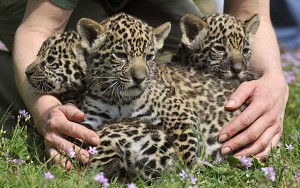 Each year thousands of animals are sold through the illegal pet trade regardless of their suitability.
Each year thousands of animals are sold through the illegal pet trade regardless of their suitability.
The other way to monetise poaching is through the sale of animals In the global black-market pet trade, an industry that generates GBP 20bn (USD 32bn) per year. To put the scale of this in perspective, in 2002 it was estimated the black-market pet trade was the second-most profitable illegal business in the world, with only the international drugs market topping it.
This may sound fanciful, but when you look at the size of pet markets across nations ranging from Brazil to China, and then partner that with the fact that Europe and the US are the two biggest importers of wildlife and wildlife ‘products’ in the world, and It’s easy to see why conservation organizations are frequently raising the issue with policy makers.
Specific stats are equally scary. Between 1996 and 2007 635 tons of wildlife, with a total of 181,670 individual animals, were confiscated in transit to and from Vietnam. From 2001-05, over 11,000 specimens were seized in Central America. And, lastly, almost entirely due to poaching for the global birdcage black market, the blue-throated macaw’s wild population now rests at 250 Individuals and it has recently been uprated to Critically endangered on IUCN’s Red List.
Read also this article How Do Jaguars Survive In The Rainforest!



